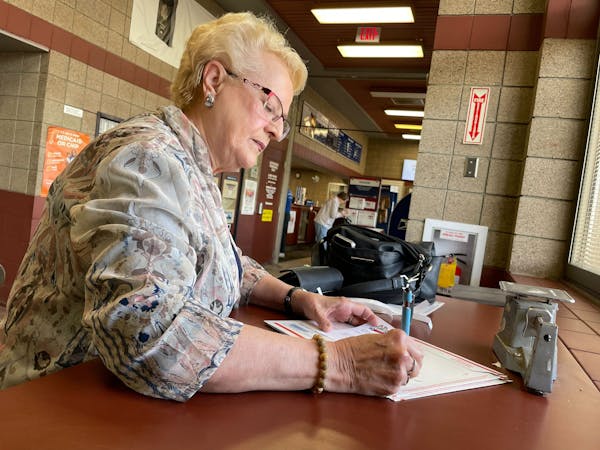We all breathed a sigh of relief when last week's updated economic forecast showed a positive balance for the state in the current budget year. This was unexpected good news.
However, if we look at the budget by comparing both the "checking account" and the "credit card statement" -- the way families and businesses do everyday -- we'll see our state's structural budget problem is far from solved.
Responding to the forecast, Republicans were quick to pat themselves on the back. House Speaker Kurt Zellers praised their "fiscal restraint" and Senate Majority Leader Amy Koch lauded how the state had "lived within its means."
Most Minnesotans, looking at the numbers, would see it differently. Here's a look at each side of the ledger. Judge for yourself:
Checking Balance: $876 million. The updated economic forecast shows Minnesota has a current "surplus" of $876 million. Like a household checking account, these are funds to cover expenses during the budget cycle we're currently in.
But unlike most checking accounts, our state's balance has not been completely generated through money that's been saved up. To the contrary, our temporary "surplus" only exists because of the Republican plan to borrow billions from our schools and from future generations -- but we'll get to that in a minute.
Savings Balance: $0. Before we spend what's in the checkbook, it's helpful to look at what's in our state's savings account. By law, Minnesota holds a budget reserve and cash flow account in order to protect the state from unforeseen fiscal challenges.
Unfortunately, these "rainy day" accounts have been completely drained to cover past deficits. As directed by state law, all of our current "surplus" must go to replenish those depleted reserves. To restore the savings account, we need to drain the checking account.
Current Debt: $4.2 billion. Our state's "credit card statement" reveals a lot of new red ink due to the budget Republicans passed after taking our state to a government shutdown. In the next budget cycle, Minnesotans will face a $1.3 billion budget deficit.
This has been a familiar story. In eight of 10 years, the state has faced a deficit. Instead of making permanent adjustments to our budget, we have used one-time dollars, accounting shifts, and borrowing. All this patchwork and duct tape hasn't solved the problem.
Part of the reason is that the budget passed by Republicans included record amounts of borrowing from our schools. We extended what's called a "school shift" to a 40/60 level, which amounts to nearly $3 billion.
As a result of this record borrowing, we're seeing two out of every three schools being forced to borrow money of their own. To put the size of this borrowing in perspective, only one state has ever borrowed from schools like this: California, which is not exactly a poster child for fiscal stability. And Minnesota's shift was more than twice the size of theirs.
Finally, for the first time ever, Minnesota has engaged in deficit spending by borrowing against future revenues from tobacco settlement funds. This unprecedented move netted $640 million in one-time cash, but it will end up costing us more than $1 billion to pay off the debt and the interest -- much like a high-interest credit card.
Bottom Line: Billions in debt and a long road to recovery. Having a few dollars in the checking account doesn't go a long way if you've maxed out the credit card paying your bills. Unfortunately, that's the state of our state finances. With our state economy still in a precarious state, it's premature to talk about a surplus.
This is painfully obvious to untold numbers of homeowners and businesses who have seen their taxes spike significantly after Republicans eliminated hundreds of millions in property tax relief this year.
And to the nearly 200,000 Minnesotans who are still out of work. And to college students who are seeing their tuition rates spike after Republicans made historic cuts to higher education. And to Minnesotans caring for aging parents who saw deep cuts in their wages.
The Republican majorities may claim to be living within their means, but to them that means borrowing billions of dollars and placing the burden for their irresponsible budget squarely on middle-class Minnesotans.
Our forecast shows we have taken a step forward, but due to our hefty debt, we're starting two or three steps behind. It's time to deal honestly and fairly with the long-term budget problem that remains, get our state back on track and strengthen Minnesota's middle class.
* * *
Lyndon Carlson, is a member of the Minnesota House. Dick Cohen, DFL-St. Paul, is a member of the Senate.
For Mother's Day, I don't want brunch. We need a cease-fire.



